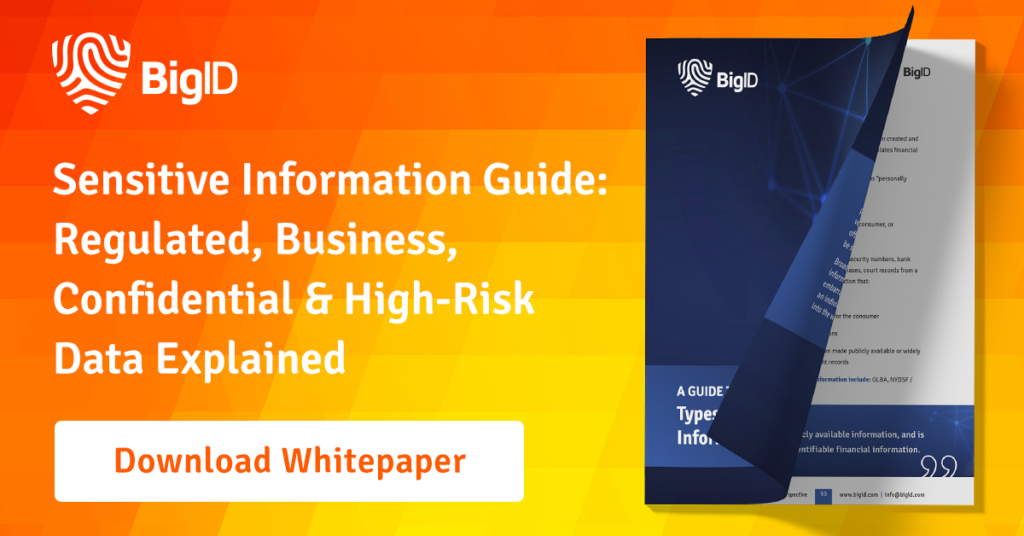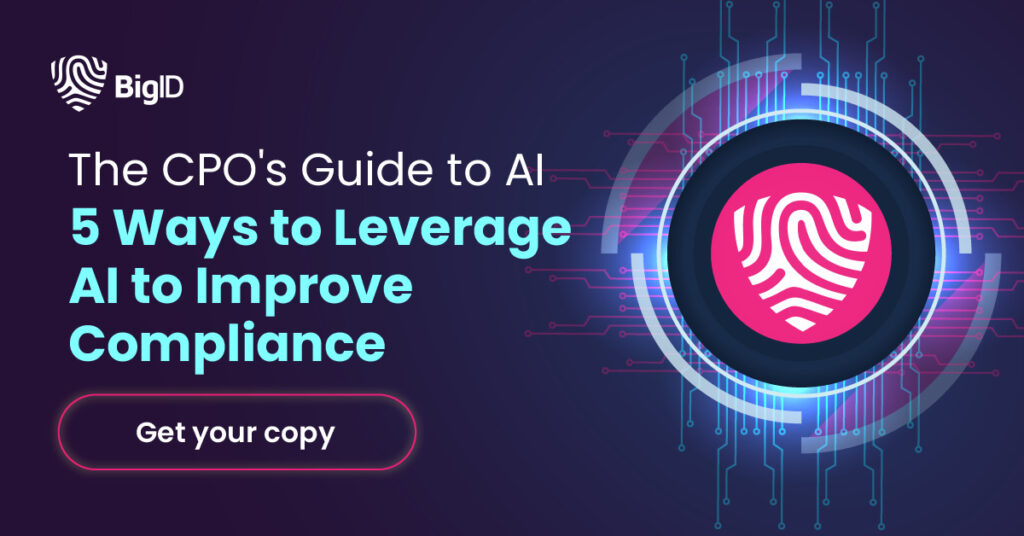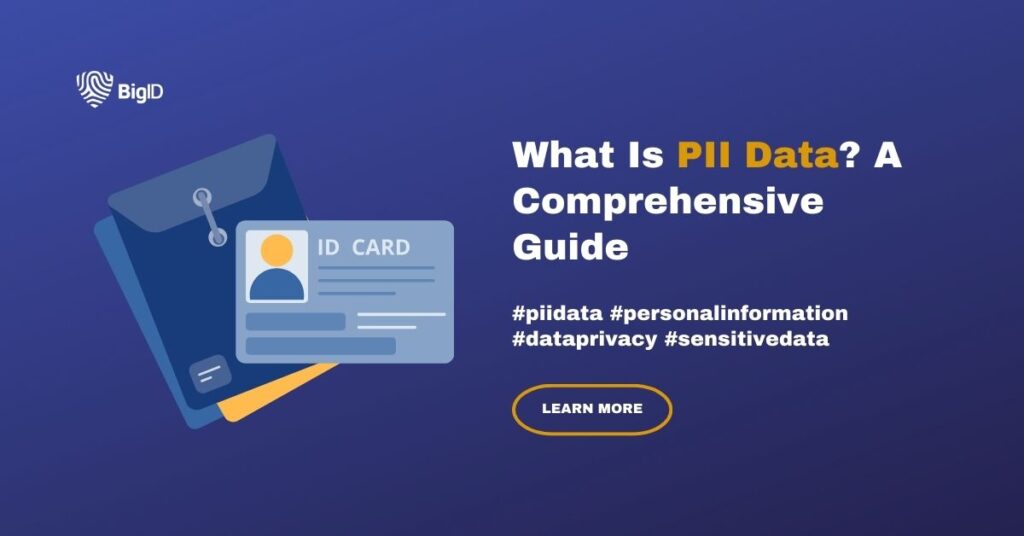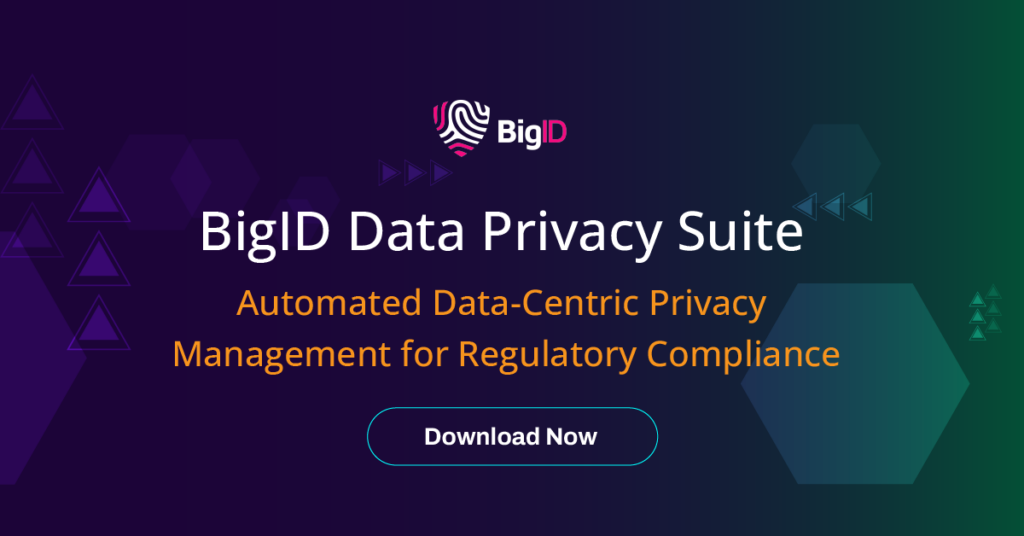Understanding PII Data: Protecting Your Most Sensitive Information
In today’s digital age, personal information is more vulnerable than ever. The term “PII” stands for Personally Identifiable Information, which encompasses a wide array of data that can be used to identify an individual. As technology advances, the importance of understanding, managing, and protecting PII becomes increasingly critical. In this blog, we will explore what PII data entails, its significance, the risks associated with its exposure, and best practices for safeguarding this sensitive information.
What is PII Data?
Personally Identifiable Information (PII) refers to any data that can be used to identify a specific individual. This includes, but is not limited to, names, addresses, social security numbers, phone numbers, and email addresses. PII can be found in both structured formats, like databases and spreadsheets, and unstructured formats, such as emails, documents, and images. Additionally, PII can extend to more indirect identifiers like IP addresses, login credentials, and even cookies when combined with other data.
Why is Protecting PII Data Important?
PII is crucial because it directly impacts an individual’s privacy and security. Here are several reasons why safeguarding PII is essential:
Identity Theft
One of the most severe consequences of PII breaches is identity theft. When malicious actors gain access to PII, they can use it to impersonate the victim, opening bank accounts, applying for loans, or committing fraud. According to the Federal Trade Commission (FTC), there were over 4.8 million identity theft and fraud reports in the U.S. in 2020 alone, highlighting the pervasive threat of identity theft.
Financial Loss
Both individuals and organizations can suffer significant financial losses due to PII breaches. For individuals, the misuse of personal information can lead to unauthorized transactions, drained bank accounts, and ruined credit scores. For organizations, the costs include not only immediate financial losses but also long-term repercussions such as legal fees, regulatory fines, and compensation to affected individuals. A 2020 report by IBM estimated that the average cost of a data breach is $3.86 million, emphasizing the substantial financial impact.
Privacy Violations
A breach of privacy is another critical consequence of mishandling PII. Individuals expect their personal information to be kept confidential and used appropriately. When this trust is broken, it can lead to a loss of confidence in the organization, damage to reputation, and emotional distress for the affected individuals. For example, the infamous Equifax breach in 2017 exposed the personal information of 147 million people, leading to widespread concern over privacy violations.
Legal Consequences
Mishandling PII can lead to legal consequences, including lawsuits from affected individuals. Class-action lawsuits can be particularly damaging, both financially and reputationally, to organizations found negligent in protecting PII.
Key Stakeholders Responsible for Safeguarding PII Data
Safeguarding Personally Identifiable Information (PII) is a shared responsibility that involves multiple stakeholders within an organization. Each stakeholder plays a crucial role in ensuring that PII is protected from unauthorized access and breaches. Understanding who these stakeholders are and their respective responsibilities is essential for a comprehensive data protection strategy. Here are the key stakeholders responsible for safeguarding PII data:
1. Executive Leadership
The executive leadership team, including the CEO, CFO, and other C-level executives, sets the tone for the organization’s data protection culture. Their responsibilities include:
- Policy Development: Establishing and endorsing robust data protection policies.
- Resource Allocation: Providing necessary resources, including budget and personnel, to implement effective data protection measures.
- Compliance Oversight: Ensuring that the organization complies with relevant data protection laws and regulations.
2. Chief Information Security Officer (CISO)
The CISO is primarily responsible for the overall security posture of the organization, including the protection of PII. Key duties include:
- Security Strategy: Developing and implementing the organization’s information security strategy.
- Risk Management: Identifying, assessing, and mitigating risks to PII.
- Incident Response: Leading the response to data breaches and security incidents involving PII.
3. IT and Security Teams
The IT and security teams are on the front lines of protecting PII. Their responsibilities include:
- Infrastructure Security: Implementing and maintaining security measures such as firewalls, encryption, and intrusion detection systems.
- Access Management: Ensuring that only authorized personnel have access to PII.
- System Monitoring: Continuously monitoring systems for potential security threats and vulnerabilities.
4. Data Protection Officer (DPO)
In organizations subject to regulations like the GDPR, a Data Protection Officer (DPO) is appointed to oversee data protection strategies and compliance. The DPO’s duties include:
- Regulatory Compliance: Ensuring that the organization complies with all applicable data protection laws.
- Privacy Training: Educating employees about data protection practices and legal obligations.
- Data Protection Impact Assessments (DPIAs): Conducting DPIAs to identify and mitigate privacy risks associated with data processing activities.
5. Human Resources (HR)
The HR department handles a significant amount of PII and plays a vital role in its protection:
- Employee Training: Conducting regular training sessions on data protection and privacy practices.
- Policy Enforcement: Ensuring compliance with data protection policies within the workforce.
- Handling Employee Data: Safeguarding the PII of employees, including personal records and payroll information.
6. Legal and Compliance Teams
Legal and compliance teams ensure that the organization adheres to data protection regulations and manages legal risks associated with PII:
- Regulatory Awareness: Staying informed about changes in data protection laws and regulations.
- Policy Review: Reviewing and updating data protection policies to ensure compliance.
- Incident Management: Providing legal guidance during data breach incidents and managing regulatory reporting requirements.
7. All Employees
Every employee has a role in protecting PII, making awareness and training critical:
- Awareness and Vigilance: Understanding the importance of PII and being vigilant in their daily tasks.
- Following Best Practices: Adhering to data protection policies and best practices in handling PII.
- Reporting Incidents: Reporting any suspicious activities or potential breaches to the relevant authorities within the organization.
Safeguarding PII is a collective responsibility that spans across various roles within an organization. From executive leadership to IT teams and every individual employee, each stakeholder plays a crucial part in protecting personal information. By understanding their roles and responsibilities, organizations can create a cohesive and effective data protection strategy that minimizes risks and ensures compliance with legal standards. Together, these stakeholders form a robust defense against the threats facing PII in today’s digital landscape.

Common PII Exposure Threats
The digital transformation of services and the proliferation of online platforms have increased the risks associated with PII exposure. Common threats include:
- Data Breaches: Unauthorized access to databases can result in massive amounts of PII being leaked.
- Phishing Attacks: Fraudulent attempts to obtain PII through deceptive emails or websites.
- Insider Threats: Employees or contractors with access to PII might misuse it intentionally or unintentionally.
- Insecure Data Storage: Storing PII without adequate security measures can lead to unintended exposure.
PII Data Regulations
General Data Protection Regulation (GDPR)
The GDPR, applicable in the EU, mandates stringent requirements for PII data handling, including the right to access, rectification, and erasure of personal data.
California Consumer Privacy Act (CCPA)
The CCPA provides California residents with rights regarding their personal information, including the right to know what data is collected and the right to delete personal information.
Health Insurance Portability and Accountability Act (HIPAA)
HIPAA sets national standards for the protection of health information in the U.S., focusing on securing and confidentially handling PII in healthcare.
Best Practices For Implementing Effective PII Data Controls
In an era where data breaches and cyber threats are on the rise, implementing robust PII data controls is crucial for safeguarding personal information. PII data controls are measures and protocols designed to protect Personally Identifiable Information from unauthorized access, disclosure, alteration, and destruction. These controls are essential for maintaining data integrity, confidentiality, and availability. Let’s delve into some of the most effective PII data controls that organizations can deploy to ensure comprehensive protection.
Access Controls
Access controls are fundamental in limiting who can view or use PII within an organization. These controls include:
- Role-Based Access Control (RBAC): Assign permissions based on an individual’s role within the organization. Only those who need access to PII for their job functions should have it.
- Multi-Factor Authentication (MFA): Implement MFA to add an extra layer of security. This requires users to provide two or more verification factors to gain access to systems containing PII.
- Least Privilege Principle: Ensure users have the minimum level of access necessary to perform their duties. Regularly review and adjust access permissions as needed.
Data Encryption
Encryption is a critical control for protecting PII during storage and transmission:
- Encryption at Rest: Encrypt PII stored on databases, file systems, and backups. This ensures that even if unauthorized access occurs, the data remains unreadable without the decryption key.
- Encryption in Transit: Use secure protocols like TLS (Transport Layer Security) to encrypt PII during transmission over networks. This protects data from being intercepted by malicious actors.
Data Masking and Anonymization
To reduce the risk of exposure, sensitive PII can be masked or anonymized:
- Data Masking: Replace sensitive information with fictional data while retaining the format. This is useful for testing and development environments.
- Anonymization: Remove or modify PII to prevent the identification of individuals. Anonymized data can be used for analysis without risking privacy.
Monitoring and Logging
Continuous monitoring and logging are essential for detecting and responding to security incidents:
- Activity Logs: Maintain detailed logs of access and actions performed on systems containing PII. These logs should include timestamps, user IDs, and the nature of the activity.
- Real-Time Monitoring: Implement real-time monitoring tools to detect unusual or unauthorized activities. This can help identify potential security breaches quickly.
- Audit Trails: Regularly review audit trails to ensure compliance with data protection policies and to investigate any suspicious activities.
Data Retention and Disposal
Proper data retention and disposal policies help minimize the amount of PII at risk:
- Retention Policies: Define and enforce policies for how long PII should be retained. Only keep data for as long as necessary for business or legal purposes.
- Secure Disposal: Ensure that PII is securely destroyed when no longer needed. This can include shredding physical documents and using data wiping techniques for digital files.
Employee Training and Awareness
Human error is a common cause of data breaches. Regular training can significantly reduce this risk:
- Security Awareness Programs: Educate employees on the importance of PII protection and the best practices for handling sensitive information.
- Phishing Simulations: Conduct regular phishing simulations to teach employees how to recognize and avoid phishing attacks.
- Policy Communication: Ensure all employees are aware of the organization’s data protection policies and understand their responsibilities in safeguarding PII.
Incident Response Planning
Despite best efforts, incidents can occur. An effective incident response plan ensures a swift and coordinated response:
- Response Team: Establish a dedicated incident response team responsible for managing data breaches and other security incidents.
- Incident Protocols: Develop clear protocols for identifying, containing, and mitigating the impact of security incidents involving PII.
- Post-Incident Review: Conduct post-incident reviews to understand the root cause and to improve future prevention and response strategies.
Implementing effective PII data controls is not just a regulatory requirement but a fundamental aspect of maintaining trust and security in today’s digital world. Investing in these controls not only safeguards against data breaches but also demonstrates a commitment to privacy and security, fostering trust with customers and stakeholders.
The Future of Safeguarding PII Data: Impacts of AI Adoption
The rapid evolution and integration of Artificial Intelligence (AI) have significantly impacted the way Personally Identifiable Information (PII) is managed, protected, and utilized. While AI offers numerous benefits in enhancing data processing and security measures, it also introduces new challenges and risks. Here’s a straightforward explanation of how AI affects PII data:
Enhanced Data Analysis and Processing
AI technologies, such as machine learning and natural language processing, can analyze vast amounts of data more quickly and accurately than traditional methods. This capability allows organizations to:
- Identify Patterns and Anomalies: AI can detect unusual patterns that may indicate a security breach, enabling faster response times.
- Improve Data Accuracy: AI algorithms can clean and organize PII, reducing errors and inconsistencies.
Advanced Security Measures
AI plays a crucial role in strengthening data security through:
- Threat Detection: AI-powered systems can continuously monitor for cyber threats and alert organizations to potential breaches in real-time.
- Behavioral Analysis: By analyzing user behavior, AI can identify suspicious activities and prevent unauthorized access to PII.

Automated Data Management
AI streamlines data management processes, including:
- Data Masking and Encryption: AI can automate the application of masking and encryption techniques to protect PII from exposure.
- Access Controls: AI can dynamically adjust access controls based on user roles and behavior, ensuring that PII is only accessible to authorized individuals.
Increased Privacy Risks
Despite its benefits, AI also introduces new privacy risks:
- Data Misuse: AI systems can inadvertently misuse PII if not properly governed, leading to privacy violations.
- Bias and Discrimination: AI algorithms can reflect and amplify biases present in the data, resulting in unfair treatment of individuals based on their PII.
- Data Aggregation: AI can combine multiple data sources to create detailed profiles of individuals, raising concerns about surveillance and privacy.
Regulatory Compliance Challenges
The integration of AI in data management necessitates careful consideration of regulatory compliance:
- Transparency and Accountability: Organizations must ensure that AI systems are transparent and that decisions made by AI can be explained and justified.
- Data Minimization: AI systems should adhere to the principle of data minimization, collecting only the PII necessary for specific purposes.
- Consent Management: Organizations need to manage consent effectively, ensuring that individuals are aware of how their PII is being used by AI systems.
Ensuring Privacy and Safeguarding PII Data with BigID
BigID is the industry leading platform for data privacy, security, compliance ,and AI data management that uses deep data discovery to give organizations more visibility and control over their enterprise data no matter where it lives.
With BigID businesses can:
- Discover Your Data: Discover and catalog your sensitive data, including structured, semi-structured, and unstructured – in on-prem environments and across the cloud.
- Know Your Data: Automatically classify, categorize, tag, and label sensitive, personal data with accuracy, granularity, and scale.
- Map Your Data: Automatically map PII and PI to identities, entities, and residencies to visualize data across systems.
- Automate Data Rights Management: Automate individual, personal data rights fulfillment requests from access and updates to appeals and deletion.
- Monitor Cross-Border Data Transfers: Apply residency to data sources and individual, personal data with policies to trigger alerts on cross-border data transfer violations.
- Assess Privacy Risks: Initiate, manage, document, and complete various assessments, including PIA, DPIA, vendor, AI, TIA, LIA, and more for compliance and risk reduction.
To galvanize all your privacy initiatives and secure PII data— book a 1:1 demo with our experts today.



